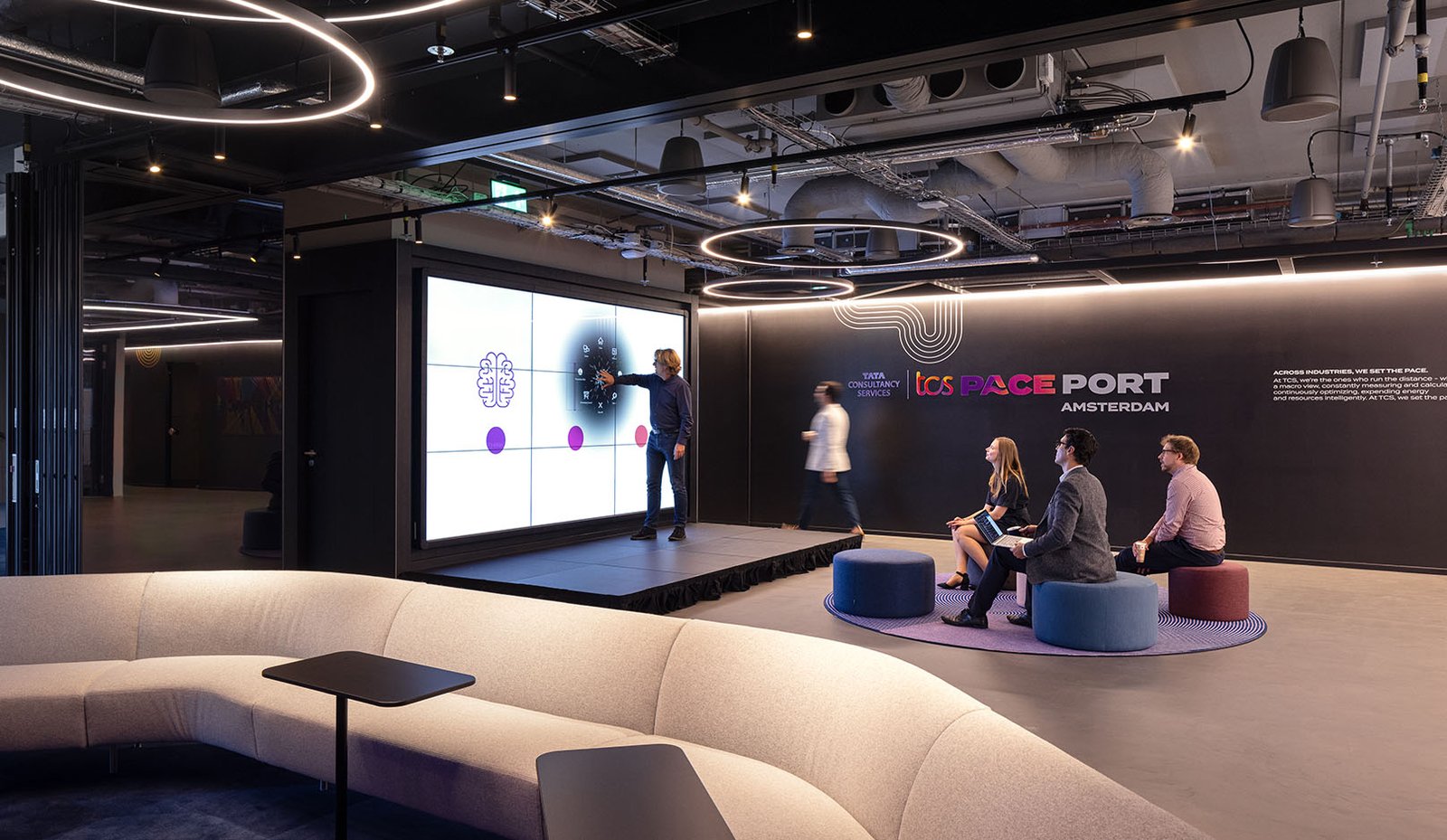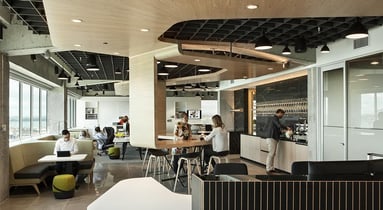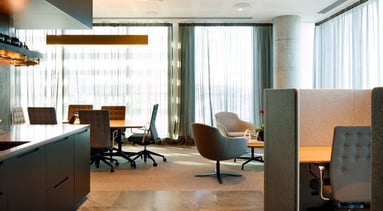How is technology transforming the workplace?

Tim Larson, President of Downstream Unispace, joined experts from Locatee AG and EY LLP at CoreNet to discuss how we can leverage the power of technology to support the future of work.
Embracing digital transformation
With the pandemic sparking a new era of “ways of working”, technology has become an integral part to everyday business operations and processes. Today, corporate real estate (CRE) professionals increasingly rely on new tools, apps, equipment, data, and analytics to add value to their organizations. While some companies seek piecemeal tools to individually address specific issues, others are looking for integrated, end-to-end solutions. The smoother the integrations, the easier it can be to drive effectiveness (and adoption) and scale the ecosystem. But there is no one-size-fits-all solution.
Organizations need to focus on leveraging multiple systems effectively and aggregate this data centrally, to enable greater insights for data-driven decision-making and risk management strategies. Business decisions are now made with our new work reality in mind, and considers how every employee interacts and interfaces with technology.
“Organizations need to realize that they need to change and adapt the way people are working and communicating - including the new technologies that are emerging such as the AR/VR platforms. Collaboration systems allow people to really connect in virtual spaces.” - Tim Larson, President of Downstream, Unispace
Work is no longer a place, it’s an experience
For forward-thinking companies, it’s critical to discover new ways to recruit, engage with and retain employees - particularly during the ongoing war for talent . With flexi-hybrid working, employees are now able to dictate the environment they want to work in. Organizations need to provide an ecosystem of tech savvy spaces for employees, facilitating collaboration sessions and social moments they crave. Think about how people use these spaces and are connected to these spaces. Using VR technologies, companies can host virtual tours to help visualize their dream spaces. These technologies are also helping human resource departments to improve collaboration between teams, employee training, and onboarding processes to help their employees embody their values.
Data-driven design strategies for the future
There has been an evolution over the last five years on how corporate real estate has changed interaction with IoT systems. Now, numerous systems exist that focus on cyber security and data value. So, what’s next? CRE leaders are always looking for new ways to optimize data to make their processes more streamlined.
Companies need to realize they already have the power to leverage their data to create a workspace that sparks innovation, creates a sense of belonging and drives collaboration. Something as simple as looking at where employees spend most of their time can tell a tale. Are you optimally utilizing your space? Looking at employee behaviour can help identify what space is used and what isn’t.
The office isn’t going away - it is evolving into something new. Companies are adapting to various tools designed to cope with large datasets and are refocusing their efforts on enhancing data-driven core goals. Purposeful work deserves a meaningful place that brings together people, design and performance together to create authentic and inspiring spaces.
CoreNet members can watch the full webinar here to learn more.
Other panel speakers included:
Myriam Locher, Co-CEO Locatee AG, Jeffrey Chulick, Managing Director and Workplace Insight Leader, EY, and Host and Moderator Sonali tare, Vice President, Content Experience, CoreNet Global.
About Tim Larson, Design Principal at Downstream
 Tim Larson has been a leading innovator in the field of designing emerging experiences, and interaction in architectural environments for more than 25 years. As the Design Principal for Downstream, Tim has led the firms work in experiential design and user-activated environments, pioneering new approaches in corporate innovation labs, corporate visit centers, retail stores, sports and entertainment venues and public space communication technology
Tim Larson has been a leading innovator in the field of designing emerging experiences, and interaction in architectural environments for more than 25 years. As the Design Principal for Downstream, Tim has led the firms work in experiential design and user-activated environments, pioneering new approaches in corporate innovation labs, corporate visit centers, retail stores, sports and entertainment venues and public space communication technology
Follow Tim on LinkedIn.


.png?width=383&height=348&name=Product%20Runway%20website%202016%20(1).png)